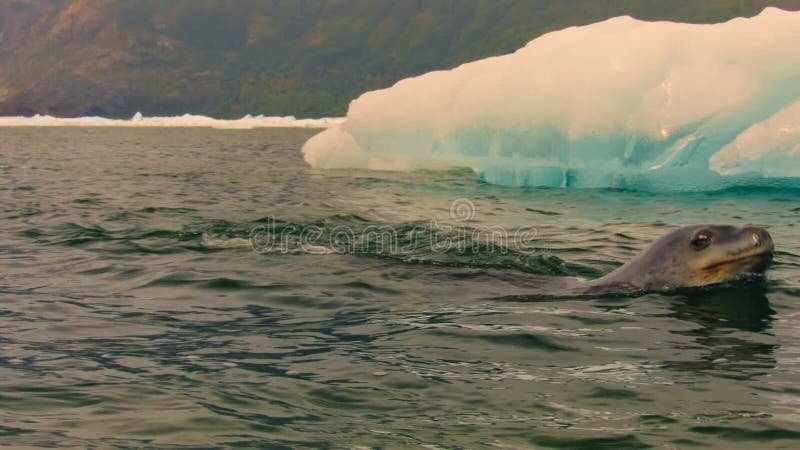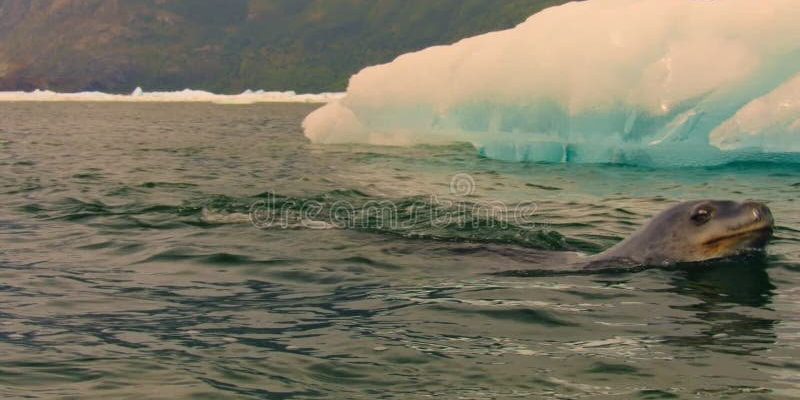
Leopard seals are intriguing not just for their appearance, but also for their behaviors and social structures. Their breeding season unveils a captivating narrative of courtship, parenting, and survival. If you’ve ever wondered how these majestic seals carry on their legacy against the backdrop of icy waters, you’re in for a treat. Let’s dive into the world of leopard seal reproduction, exploring everything from mating rituals to the nurturing of pups.
Understanding Leopard Seal Mating Behavior
Leopard seals are solitary creatures, often spotted wandering the icy waters alone or in small groups. However, when it comes to mating season, things change. Typically, the breeding season occurs from late September to early December. During this time, these seals seek out partners, leading to some fascinating courtship behaviors.
Males attract females by exhibiting energetic displays. You might see them leaping out of the water or rolling around on the surface, showcasing their agility and strength. It’s a bit like a dance-off, where the most impressive moves might just snag a mate! Interestingly, females can be quite choosy. They often select mates based on their physical prowess and the vocalizations they produce, leading to a unique blend of criteria for attraction.
Once a male successfully courts a female, they engage in mating, which can last for several days. Here’s the thing: leopard seal mating isn’t just a quick fling; it involves intense bonding, which can deepen their connection. This can sometimes lead to a situation where the same pairs meet again in subsequent years, forming a long-term bond.
The Gestation Period and Birthing
After mating, the female leopard seal enters a significant phase—pregnancy. The gestation period lasts about 11 months, which is quite long for a seal, reflecting the need for pups to be well-developed when they are born. Picture it like a long wait for a new baby; there’s a lot of anticipation! During this time, the mother continues to hunt, feeding on a diet primarily consisting of krill and fish, to ensure she’s healthy and capable of nursing.
When the time comes to give birth, the female typically moves to ice floes or beaches. In late November to early December, she will give birth to a single pup, although twins are rare. This moment is significant; the pup is born weighing around 50 pounds and is about 3 feet long—already a robust little swimmer!
Here’s a fun fact: leopard seal mothers are highly attentive and protective. After giving birth, they remain with their pups on the ice to ensure their safety from predators, such as orcas and even other seals. This nurturing phase is crucial, as the pup will rely on its mother for warmth and food.
Raising Pups: The First Few Months
Once the pup arrives, raising it becomes the mother’s top priority. For the first few weeks, the mother and pup stay together as she nurses her baby. This bonding is essential, not only for nourishment but also for teaching the pup essential survival skills. While nursing, which can last up to 6 weeks, the mother will often leave the pup on the ice to hunt.
You might be wondering how a seal knows when to return to its pup. Leopard seals have excellent senses and memory, allowing them to navigate their environment effectively. They can easily remember their pup’s location, even in crowded seal colonies. After nursing, she teaches her pup how to swim and hunt.
As the weeks pass, the pup grows stronger and starts to develop its hunting skills. The mother provides demonstrations, showcasing how to catch fish and navigate underwater. Eventually, the pup becomes independent and can venture out on its own. It’s a remarkable transformation, much like a parent watching their child learn to ride a bike.
Challenges Faced During Reproduction
Breeding and raising pups isn’t just a stroll in the park for leopard seals. They face several challenges that can impact their reproduction success. One of the most significant threats is the changing climate. With ice melting and the ocean temperatures rising, the ice floes that serve as breeding grounds are disappearing.
This loss of habitat makes it hard for mothers to find safe places to give birth and raise their young. Additionally, as their hunting grounds change, mothers may struggle to find enough food to sustain themselves and their pups. The changing environment means that the seal must adapt quickly or risk lower survival rates for their offspring.
Moreover, leopard seals have natural predators, like orcas, which add to the pressures faced during these critical reproductive times. The competition for food can also be fierce, not just among seals but with other marine animals. It’s a challenging world out there, and these seals need to be resilient.
The Lifespan and Maturity of Leopard Seals
Leopard seals typically live for about 15 to 20 years in the wild, but they reach sexual maturity at around 3 to 4 years. It’s fascinating to consider the life stages of these seals—their early years are all about learning and surviving in a competitive marine environment.
Once they hit maturity, they contribute to the population, continuing the circle of life in their Antarctic home. This is where the cycle of breeding starts anew, and the behaviors learned as pups come full circle. Maturing seals are better equipped to handle the challenges of parenting thanks to their early experiences and the teachings from their mothers.
In some ways, the leopard seal’s journey mirrors our own experiences. Just like they learn from their parents and adapt to their environment, we also grow through life’s challenges and learn what it takes to thrive.
The Importance of Conservation for Leopard Seals
As we wrap up our exploration of leopard seal breeding and reproduction, it’s crucial to recognize the importance of conservation efforts. These seals play a vital role in the marine ecosystem, helping maintain the balance within their food chain. Protecting their breeding grounds and ensuring they have a healthy environment is essential for their survival.
Organizations worldwide are working to study and mitigate the impacts of climate change on leopard seals. By understanding their behaviors and challenges, we can implement effective conservation strategies to support their populations. Awareness and education about these animals are also vital—a well-informed public is more likely to support conservation initiatives.
Here’s the bottom line: We all have a role in protecting these magnificent creatures. Whether it’s supporting local conservation programs or simply learning more about the challenges faced by marine life, every little bit helps. By working together, we can ensure that future generations will also be able to marvel at the beauty of leopard seals and their complex lives.
As you can see, the breeding and reproduction of the leopard seal are intricate processes filled with both beauty and challenges. While these seals navigate love and parenthood in a harsh environment, the balance of nature continues to unfold. Understanding their lives gives us insight into the larger picture of marine ecosystems and the importance of conservation efforts worldwide.

